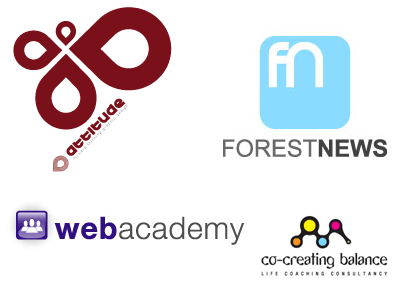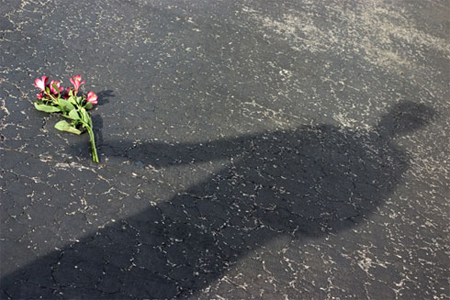Audio versions of our interviews with Matt Davies, Paul Scrivens, and Ryan Sims.
The first in our new podcasting feature. You’ll see much more content being turned into audio, and original interviews in one one one audio format. Stay tuned!
Design, Develop, and Grow
By Devlounge
Audio versions of our interviews with Matt Davies, Paul Scrivens, and Ryan Sims.
The first in our new podcasting feature. You’ll see much more content being turned into audio, and original interviews in one one one audio format. Stay tuned!
By Devlounge
Who’s behind the “Attitude” of Attitude Design? Find out in this insightful interview with this talented young designer.
DL: Hey Matt, how are you today. Before we get into things, mind giving us the “411” on yourself? Basic background stuff is fine since we’ll be asking more detailed stuff soon enough.
MD: Greetings DevLounge. Before we start I just want to say its an honor to be featured on your site. I visit here frequently and find it extremely useful.
Basic Background Stuff – I’m a 21 year old multi disciplined Graphic Designer. I grew up in Croydon (South London UK) but am now married and living in the wonderful city of Nottingham (Midlands UK).
My background is in print and branding design but over the last few years I have moved into accessible html, flash and rich media designing.
DL: How did you first get started in design? In a recent journal entry you stated sketching as a kid had a lot to do with it. I have to say that’s what really got me into design as well.
MD: Yes, I was always very creative. I seem to have a passion for new and effective visual ideas and have done so from since I can remember. I used to draw and paint as a child. As time went on and I needed to think about a career, I soon realised that it was mainly dead artists that made any money – which, at that tender age didn’t seem like a great career path – so I looked around and discovered graphic design. This had a better appeal to me as it seemed to be creating for a purpose, rather than creating because of a personal whim.

I went to College and studied a diploma in Graphic Design. In the first year of my course, at the age of 16, I started Attitude Design and also started to freelance in my spare time. I also had the opportunity to do part time work at a small agency and when I finished my college course I then went on to work for this agency full time.
I loved it and didn’t look back from then on. Being in the real world with real people and real money was something that college and university couldn’t offer me and I took to the working environment well. That’s really how I started. Since then I have worked for about 3 other agencies full time and freelanced on and off both in house with other agencies or on my own. The agency I currently work for is called Defacto.
DL: What’s it like being an employee of De Facto? The site itself is rather hush-hush, with not a lot to it but links to clients. Do you believe in the “let work speak for itself” philosophy?
MD: To be fair our site is not a good example of the work we do. I think its quite a few years old. We have been so busy that whenever we seem to have some time to work on it something comes up. Defacto are a fantastic example of letting their work speak for itself. With clients like Fred Perry and Hugo Boss we don’t really need to shout very loud. Saying that, I have heard a rumor we may start looking at designing a new site in the new year – we’ll see if we get time!
Its great working at Defacto. We have a really talented team and I am learning loads. I also enjoy working with recognized brands and within a creatively focused environment. I feel in myself that since I joined the team I have improved my skills about 10 fold.
Let work speak for itself? Personally I think allowing your work to speak solely for itself is nice but clients need to know they can work with you on a personal level. You may be a fantastic design company but if you are disorganized then you may not be in the best position to offer clients what they need, when they need it. Work and client management have to go hand in hand, although normally at the beginning the work speaks for itself, as time goes on, the way you handle your clients will determine if you hang on to them or not.
DL: You’re also an author for fadtastic. What’s your favorite piece you’ve contributed over there? I really liked The Future of Design, it provided some great insight.
MD: My favorite piece? Owww – that’s a tough one. I quite liked “Is Glass Still Class” because to me, it represents what fadtastic is all about – web and design trends being discussed and debated. Saying that, I love all the articles that come out of fadtastic – whither they are mine or another author. There are a great set of individuals that contribute from varying back grounds but all with a passion for design.
DL: You have quite an extensive portfolio. What’s your favorite thing to do – logos, illustrations, full site designs, or photography?
“I think what I really love is the journey you undertake with a brand design. There’s not just the logo but the goals and the strategy to achieve those goals.”
MD: If I were to say what I enjoyed the most it would be logo design – but logo design with an in depth perception of what the client is trying to achieve. “Branding” I guess is the common term.
I think what I really love is the journey you undertake with a brand design. There’s not just the logo but the goals and the strategy to achieve those goals. There’s the online and offline strategies and the implementation of the brand into all the assisting materials used.

What I’m trying to say is that although I do enjoy working on odd projects, what I mostly enjoy is larger jobs and clients who I can really get my teeth into (not literally you understand – that would be painful and probably against the law).
DL: Working for a company and all, do you have time to take your own personal work, or does most of your work come through company clients?
MD: I frequently get requests for freelancing but unfortunately I am currently unavailable for private work – all my work is done as a member of the team at De-facto. I have a good relationship with them and am morally and contractually obliged to respect them and not compete with them. However even if I wanted too, I have very little free time and so I currently decline to work on private jobs.
DL: Have you liked being part of a firm more than working on your own?
MD: There are perks in both situations. You don’t get the risk factor in an agency but you do get fellow creatives and larger projects. The team at Defacto are really talented guys and I feel very at home around them. On your own however the money is better and you can suite yourself in regards to hours and what work you take on. I would like to think I will go back to freelancing at a later stage of my career – but for now I’m cool where I am.
DL: Besides designing, what else do you like to do in your free time? Any other jobs?
MD: I am a firm believer in the Bible and so in my spare time I am always studying and reading it, trying to prepare myself for the return of Jesus to the earth.
I am also currently doing a lot of DIY to my house – which is a mammoth job in itself! If you ever get to meet me you’ll be sure to see a few bumps and scratches from my latest DIY adventure.
When I’m not doing the above you will probably find me walking around the Nottinghamshire and Derbyshire countryside, working out in the gym, gardening, experimenting with some new design technology or technique, or eating a large English breakfast in my local high street café.
DL: Any advice you’d give new designers?
MD: Passion Passion Passion. If you can develop a passion and a genuine mindset to do your best – you will go far. There’s nothing worse than a non-motivated designer. This was my reason for calling my freelance company and online portfolio “Attitude”. Having the right mindset and allowing yourself some confidence to release your creative flair is what you will need.
“If you can develop a passion and a genuine mindset to do your best – you will go far.”
Also get yourself a website. We are in the year 2006 – you are a designer – why have you got no web presence?
DL: Alright, I know you’re busy yourself, so I think now would be a good place to stop. Thanks for answering a few for us!
MD: Its been a pleasure and an honor. All the best and keep up the good work…
By Devlounge
Kristin Pishdadi, Chicago based photographer and designer, drops by to let Devlounge go “behind the camera” and get some insight on designing and photography.
Devlounge: Hey Kristin, thanks for putting the camera down for a sec to answer some questions with us. For anyone yet to see Low End Theory, mind introducing yourself and giving a brief background about your site?
Kristin Pishdadi: Hi. My name’s Kristin Pishdadi, I’m 25 years old and live in Chicago with my husband and two kids.
My site “Low End Theory” is a continuation of my old site which was titled “The Love Movement”. Both titles are inspired by the titles of two albums by “A Tribe Called Quest”. The names have no significant meanings. I am just a fan. J .
LET has been online for a little over a year now. It’s been a fun journey from the beginning. I’ve met a lot of great people along the way and learnt a lot about myself in the process.
DL: Mainly you are a photographer. How’d you get involved and photography, and what camera do you use?
KP: I’ve always been very artistic. I paint, draw, and play 4 different musical instruments. Initially, photography was a hobby, but it quickly turned into a passion.
I used to work as a freelance designer but drifted away from it because I just wasn’t enjoying it as a job anymore. When I decided to take a shot at photography as more than a hobby I signed up for some workshops and classes to help develop my photographic style.
My primary SLR is a Canon 20D, but I also have an older Digital Rebel, along with a big variety of film cameras.

DL: When taking pictures, any specific characteristics you try to focus on capturing?
KP: I try to focus on color and composition. I don’t photograph anything specific but I do make it a point to keep a camera with me 24/7.
You’d be surprised at the number of times I have driven along and seen something I had to photograph. I’ve always turned around and gone for the shot.

DL: At the same time, you use your knack for photography and deliver some beautiful sites. LET was recently featured very high in the CSS Reboot. What goes into redesigning a site, especially one like LET which has been redesigned so frequently (thanks to your extensive site history, we can see a great progressions in design.)
“You’d be surprised at the number of times I have driven along and seen something I had to photograph.”
KP: I’ve been designing for a long time. Unfortunately I did not jump on to the web standards bandwagon when I should have. When I first started LET it was to teach myself CSS/XHTML. The progression of what I have learned along the way is very obvious if you view the screenshots of my site.
The Reboot design was adapted partly from my last design. The last design worked well for my site, and I wanted to keep with a similar structure and keep my site recognizable to my visitors. The header took a big change and the page structure was flip flopped, but I kept all of the content organized the same way to make it easy for people to find what they were looking for.

DL: Do you prefer leaving images untouched, or cleaning them up here and there in photoshop before publishing them?
KP: I prefer leaving them untouched. I shoot in RAW format and usually don’t touch anything besides the levels & the white balance.
DL: Any other hobbies or interests you have that you wouldn’t mind sharing?
KP: I’m a tomboy of sorts. I’m a gamer and I’m into dsm’s.
I used to play and travel to lan parties with an all girls CS team, but I’ve moved on from PC gaming to the xbox 360. Anyone out there who wants to play with me, feel free to add “kpishdadi” to your friends list.
We’ve also got a project DSM we’ve been working on (-for the last year-) since last year. It’s a 98 Eclipse GSX with an upgraded turbo and lots of other goodies.
DL: Finally, you are greatly respected by many of the most popular bloggers. This shows a lot in a blogging / designing web mostly dominated by males. Any advice you can give, especially to females, to help get them involved in designing?
KP: Dive in! It’s easier than you would expect it to be. Feel free to ask me for help too. I don’t mind helping anyone who asks.
DL: Thanks again Kristin. Keep up the consistent great work.
KP: You’re very welcome. Good luck with the new site, it’s coming along great.
Kristin’s work is currently being featured in a Chicago Based Photography Show, open through July 2006. For more information, visit the gallery’s page.
By Devlounge
Most of you have probably heard of Matt Brett, whose blog (http://www.mattbrett.com) is very popular and is part of the 9rules Network. Although recently, Matt Brett has become more known after starting a popular standard for feed icons which is currently being spread and used everywhere.
DL: Hey Matt, please introduce yourself and tell us something about your background.
Yo! Well, besides that stuff you mentioned in the intro – I’m 25, live in Ontario Canada and currently working from home as an independent contractor. I’ve been working for the Participatory Culture Foundation since July on the Democracy Internet TV platform, but will be shifting gears to work for a small design firm based out of California as of March 13. In my spare time, I play a lot of video games and am totally into Battlestar Galactica and currently catching up on Lost.
DL: You have a great site with a very beautiful design. Where do you get your inspiration from and could you share a couple of tips and techniques for web designers?
Thanks for the kind words! I keep an eye on the various design showcase sites. You can see some of the sites in particular that caught my eye here. As far as techniques go. I get a lot of emails asking how I did some of the grungy edges on my site and some others I’ve done. The secret is Photoshop brushes. Find some good blotches and scratches and just play around until you have something that suits your needs. Deviant Art is a good place to start looking.
DL: What inspired you to create the feed icons? After Firefox adopted them as the official rss symbol, much of the web is catching on, and recently Microsoft agreed to continue using the same icons.
Just to be clear, I didn’t create the icon at all. I merely took the adapted icon that Microsoft had created and made a vector version and start distributing it. And Microsoft’s adoption of the icon was precisely what motivated me to jump on this and get the ball rolling. It’s not often MS does the right thing in a situation like this. In fact, they had released a series of mocks of the icon they were going to use in IE7 and asked for feedback on them. Some people had tossed the idea to them of using the already recognizable icon that Mozilla introduced in Firefox which prompted MS to get in touch with Mozilla and it all came together from there. We all know what power Microsoft has in this industry and there’s point in ignoring that. Millions of people are going to continue using Internet Explorer because it’s built into their operating system and it’s ‘good enough’ for what they’re using it for. It’s because of this that Microsoft’s adoption of the feed icon struck me as a very important step in the world of syndicated content. I figured, why wait for IE7 to be released to start using the icon? Let’s get things headed down the right path. And as such, FeedIcons.com was born and the standardized feed icon initiative is now in full force.
DL: How important to you think RSS is the future of the web and having syncronized content?
Extremely! I think we’ve barely scratched the surface in terms of how we utilize RSS. It’s exciting to see software like Democracy taking such a simple format and turning it into full blown tv channels. I’m sure we’ll see more of this and beyond in the near future.
“I think we’ve barely scratched the surface in terms of how we utilize RSS.”
DL: On a design related question, people always like to know if you went to school to learn graphics, or if you taught yourself. Did you find it hard, or did you just keep playing around until you got some good results?
I did a year of College back in 2000 and found it to be a complete waste of time. Mind you, it was only the second year for the ‘Multimedia’ course, which was the closest thing to web design at the time. I’m sure there’s better, more focused and specific courses out there now. I learned from doing. I simply jumped into HTML and starting changing tags to see what they did and it evolved from there. Over the past couple years, I’ve read some solid books (Web Standards Solutions, Bulletproof Web Design, The Zen of CSS Design to name a few) that have really helped in terms of understanding Web Standards to the fullest and the capabilities and greatness of CSS design.
DL: Now, we could continue asking many questions related to design and everything else, but we’re all about going beyond. You used to be in a band, and you proudly display your latest last.fm tracks right on your homepage. Obviously, music is an important part of your life. What kind of music do you like the most, and what role does music play (if any) while designing and writing?
Nice! Yes, music is a huge part of my life. There’s hardly a time I don’t have something playing. While I’m working or writing something for my site, I tend to have more low-key stuff on. Traditional reggae and orchestral stuff comes in nicely here. But some times, if I’m working on something that doesn’t require attention to detail, I’ll have on some louder stuff – I mostly listen to punk rock and ska. Some good conscience hip-hop thrown in the mix once in a while.
DL: You’re also into gaming. What are you’re favorite games?
I’m a huge first person shooter fan and I play mostly on my PC. I’m currently really into Star Wars Empire at War and The Battle for Middle-earth 2, which are both real time strategy games. It’s a nice change from simply running around shooting dudes.
DL: From a regular users standpoint, what are some of your favorite sites (love the design, love how it was put together, content, etc) that you?d recommend?
You know, I don’t really have any favourite sites, so to speak. I don’t have any bookmarks I check on a regular basis, besides Digg, Flickr, Technorati, etc. I think that’s because I subscribe to everything I’m interested in, so it’s kind of eliminated the need to repeatedly visit sites. And as far as the feeds I’m subscribed to – there’s a couple hundred right now. Just did a big ‘purge’ and nixed some that I don’t value any more.
DL: Now that we got some really “in-depth” questions down, I got one more. You’re part of the Democracy Player project (http://www.getdemocracy.com). What made you get involved with this, and how will it’s usage of rss to form playlists (podcasts) benefit it?
I had been a long time reader of Downhill Battle and when PCF (founds of DHB) announced they were hiring for a web manager, I jumped at the opportunity to work with them. I’ve always felt like I was on the same page as them in regards to beliefs and how things should be. They’re a very passionate bunch and simply do the things they feel are the right things to do. Coming from a corporate environment, this was a refreshing change of pace and just had to go for it. At the time, there wasn’t a lot of details out there in regards to the player, let alone the entire platform that’s been released now. So I can’t say that had a lot to do with my decision. I think I’ve pretty covered the second part of the question previously.
DL: Any last words or advice you’d like to give to anyone?
One of the most important things to being a good designer/developer is that you keep learning. Stay on top of new and developing technologies and trends and always try and improve and expand on your skills.
DL: Thanks for taking the time to answer some questions for us. Keep up the fantastic work.
Not a problem! Thank you!
